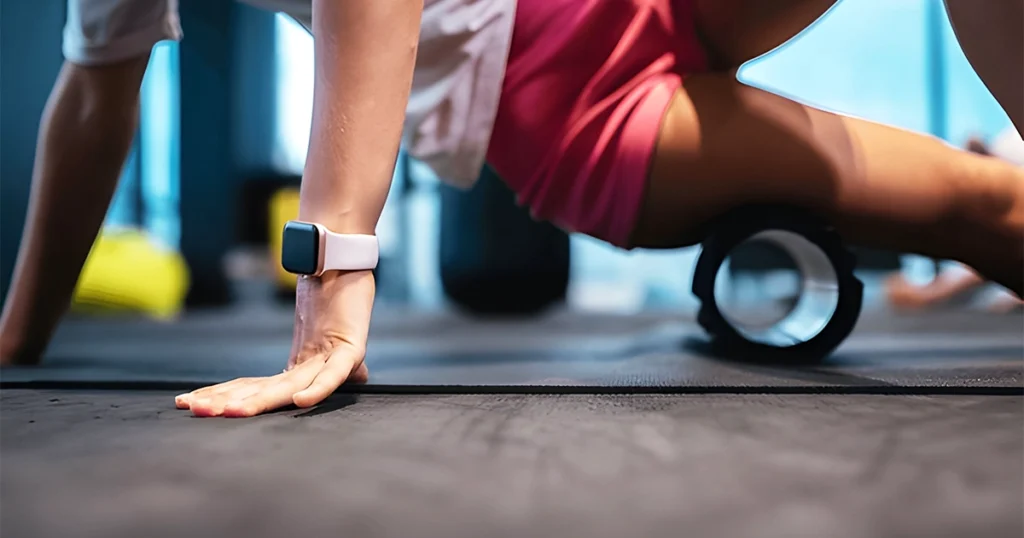Are you tired of fighting with sudden, painful back muscle spasms that feel like they strike at the worst possible moments? Did you think about the easy solution? Foam rollers could be the solution to your discomfort? Foam rollers are gaining popularity as a go-to method for relieving muscle tension, whether you are dealing with tightness from long long hours at a desk or recovering from a tough workout. The question is mandatory: how can these rollers be effective for treating back muscle spasms? Whether they truly provide long term relief so it’s just a temporary fix. Let’s get the answers and explore how this affordable tool might change the way you manage back pain.
Back muscle spasms can be debilitating, causing sudden pain and restricting movement. Managing these spasms effectively is necessary for maintaining mobility and quality of life. One popular tool for relieving back muscle spasms is the foam roller. In this article we will explore the effectiveness of foam rolling for back muscle spasms. Get to know its benefits, and provide techniques to maximize relief. We will also examine the efficacy of foam rollers in treating back pain and discuss their role in muscle spasm management.
Understanding Back Muscle Spasms
Before knowing foam rollers, it’s important to understand what back muscle spasms are. A muscle spasm is an involuntary contraction of one or more muscles, often resulting in sudden pain and stiffness. In the back, these spasms can be triggered by factors such as poor posture, overuse, injury, or stress. Effective treatment strategies are necessary to reduce pain and prevent recurrence.
Effectiveness of Foam Rolling for Back Muscle Spasms
Foam rolling has gained popularity as a self-myofascial release technique aimed at relieving muscle tension and improving flexibility. Studies and user experiences suggest that foam rolling can be effective in managing back muscle spasms by increasing blood flow, reducing muscle tightness, and enhancing range of motion.
Research indicates that regular foam rolling can decrease muscle soreness and improve recovery times, making it a valuable tool for both prevention and treatment of muscle spasms. However, it’s essential to use the foam roller correctly to achieve the desired results and avoid potential injury.
Foam Roller Benefits for Back Spasms
Using a foam roller for back spasms offers multiple benefits:
- Pain Relief: Foam rolling helps reduce pain by reducing muscle tightness and improving circulation to the affected area.
- Increased Flexibility: Regular use can enhance the flexibility of back muscles, decreasing the likelihood of future spasms.
- Improved Posture: By addressing muscle imbalances and tightness, foam rolling can contribute to better posture, reducing strain on the back.
- Stress Reduction: The physical act of foam rolling can also have a calming effect, lowering stress levels that might contribute to muscle tension.
Foam Roller for Back Muscle Relief
A foam roller provides a convenient and cost-effective method for achieving back muscle relief. It can be used at home or in the gym, allowing individuals to add it into your daily routine. For back muscle relief, the foam roller targets specific muscle groups such as the latissimus dorsi, erector spinae, and rhomboids. By applying controlled pressure, the foam roller helps release knots and tightness in these muscles, promoting relaxation and reducing spasms.
How Foam Rolling helps Back Muscle Spasms
Foam rolling helps in back muscle spasms through several mechanisms:
- Myofascial Release: Foam rolling applies sustained pressure to the connective tissue surrounding muscles(the fascia), breaking down adhesions and scar tissue that can cause muscle tightness.
- Increased Blood Flow: The pressure from foam rolling enhances circulation, delivering oxygen and nutrients to the muscles while removing metabolic waste products.
- Neuromuscular Reset: Foam rolling can help reset the neuromuscular system, improving muscle function and reducing the likelihood of involuntary contractions.
- Stretching Effect: The act of rolling can serve as a dynamic stretch, increasing muscle length and flexibility.
Foam Rolling Techniques for Back Spasm Relief
To effectively use a foam roller for back spasm relief, it’s essential to employ proper techniques. Here are some recommended methods:
Erector Spinae Roll:
- Positioning: Lie face down with the foam roller placed horizontally under the lower back.
- Movement: Gently roll up and down along the spine, avoiding direct pressure on the vertebrae. Focus on the muscle groups on either side of the spine.
- Duration: Spend 1-2 minutes rolling, pausing on tender spots to allow the muscle to release.
Latissimus Dorsi Roll:
- Positioning: Lie on your side with the foam roller under your armpit, extending your arm overhead.
- Movement: Roll from the armpit down to the mid-back, targeting the latissimus dorsi muscle.
- Duration: Roll slowly for about 1 minute on each side.
Rhomboid Roll:
- Positioning: Sit on the foam roller placed horizontally under the upper back.
- Movement: Cross your arms over your chest or place your hands behind your head. Roll back and forth, focusing on the area between the shoulder blades.
- Duration: Continue for 1-2 minutes, adjusting pressure as needed.
Thoracic Extension Roll:
- Positioning: Sit on the floor with the foam roller placed vertically behind you at the upper back.
- Movement: Lean back over the roller, extending the thoracic spine, and gently roll up and down to increase mobility.
- Duration: Perform for about 1 minute, breathing deeply to enhance relaxation.
Foam Roller Efficacy in Treating Back Pain
Back pain is often intertwined with muscle spasms, making foam rollers a valuable tool in treatment. The efficacy of foam rollers in treating back pain has been supported by various studies showing that foam rolling can reduce pain intensity and improve functional mobility. By addressing the underlying muscle tightness and improving flexibility, foam rollers help mitigate the factors contributing to back pain.
Additionally, foam rolling can complement other treatments such as physical therapy, stretching, and strengthening exercises, providing a holistic approach to back pain management.
Back Spasm Treatment with Foam Rollers
Incorporating foam rolling into a back spasm treatment plan involves consistency and proper technique. Here’s how to effectively use foam rollers for treating back spasms:
- Warm-Up: Before rolling, engage in a light warm-up like walking or gentle stretching to prepare the muscles.
- Target Areas: Focus on areas prone to spasms, including the lower back, upper back, and shoulder regions.
- Controlled Pressure: Apply moderate pressure, avoiding excessive force that could cause discomfort or injury.
- Frequency: For acute spasms, foam rolling can be performed multiple times a day. For chronic issues, incorporating it into a daily routine may yield better long-term results.
- Combine with Other Therapies: Use foam rolling alongside stretching, strengthening exercises, and professional treatments for comprehensive relief.
Foam Roller Use for Muscle Spasm Management
Managing muscle spasms effectively requires a multifaceted approach, and foam rollers can play a significant role in this strategy. Here’s how foam roller use fits into muscle spasm management:
- Preventative Care: Regular foam rolling can maintain muscle flexibility and reduce the likelihood of spasms.
- Immediate Relief: During a spasm episode, gentle foam rolling can help release muscle tension and alleviate pain.
- Rehabilitation: Post-injury or during recovery, foam rolling assists in restoring muscle function and preventing scar tissue formation.
- Integration with Lifestyle: Incorporating foam rolling into daily routines promotes overall muscle health, contributing to better management of spasms.
Tips for Safe and Effective Foam Rolling
To maximize the benefits and ensure safety while using a foam roller for back muscle spasms, consider the following tips:
- Start Slowly: If you’re new to foam rolling, begin with gentle pressure and gradually increase as your muscles adapt.
- Listen to Your Body: Avoid rolling over areas that cause sharp pain. Mild discomfort is normal, but excessive pain may indicate improper technique or injury.
- Stay Hydrated: Proper hydration supports muscle function and recovery, enhancing the effects of foam rolling.
- Consult a Professional: If you have underlying health conditions or severe back pain, consult a healthcare professional before starting foam rolling.
Foam rollers offer a versatile and effective means of managing back muscle spasms. Their benefits extend beyond immediate pain relief, contributing to long-term muscle health and flexibility. By understanding the effectiveness of foam rolling for back muscle spasms, utilizing proper foam rolling techniques, and integrating foam rolling into a comprehensive treatment plan, individuals can achieve significant relief from back spasms and improve their overall quality of life. Whether used for prevention, immediate relief, or rehabilitation, foam rollers are a valuable tool in the arsenal against back muscle discomfort.
FAQs:
Is a foam roller good for muscle spasms?
The foam roller is a wonderful tool to avoid muscle cramping and spasms.
Is it OK to massage muscle spasm?
A deep tissue massage can reduce muscle spasms by relieving the build-up of tension.
Do spasms damage muscles?
Muscle spasms are typically harmless, but they may result in an inability to use the affected muscle for a short period of time.




